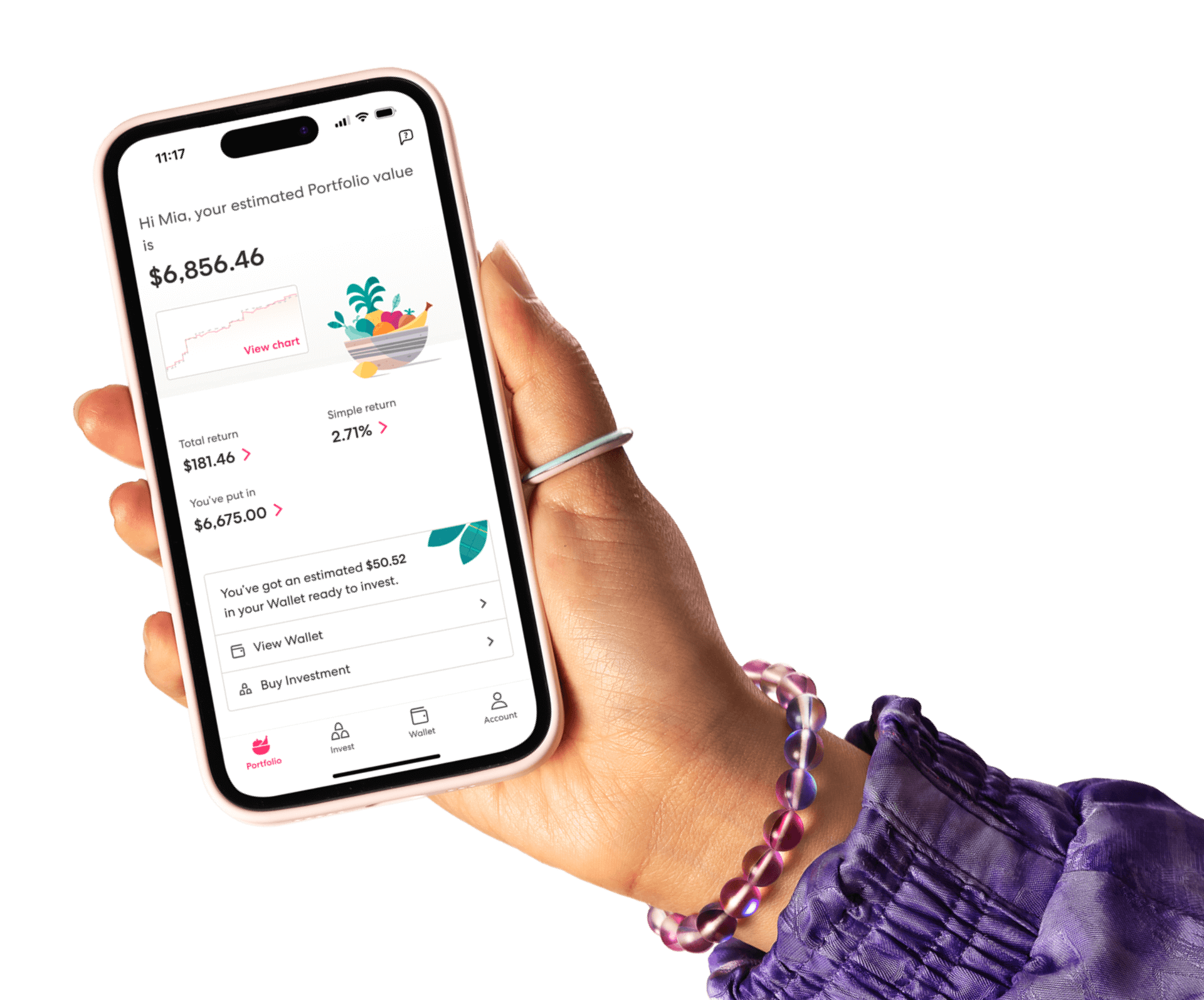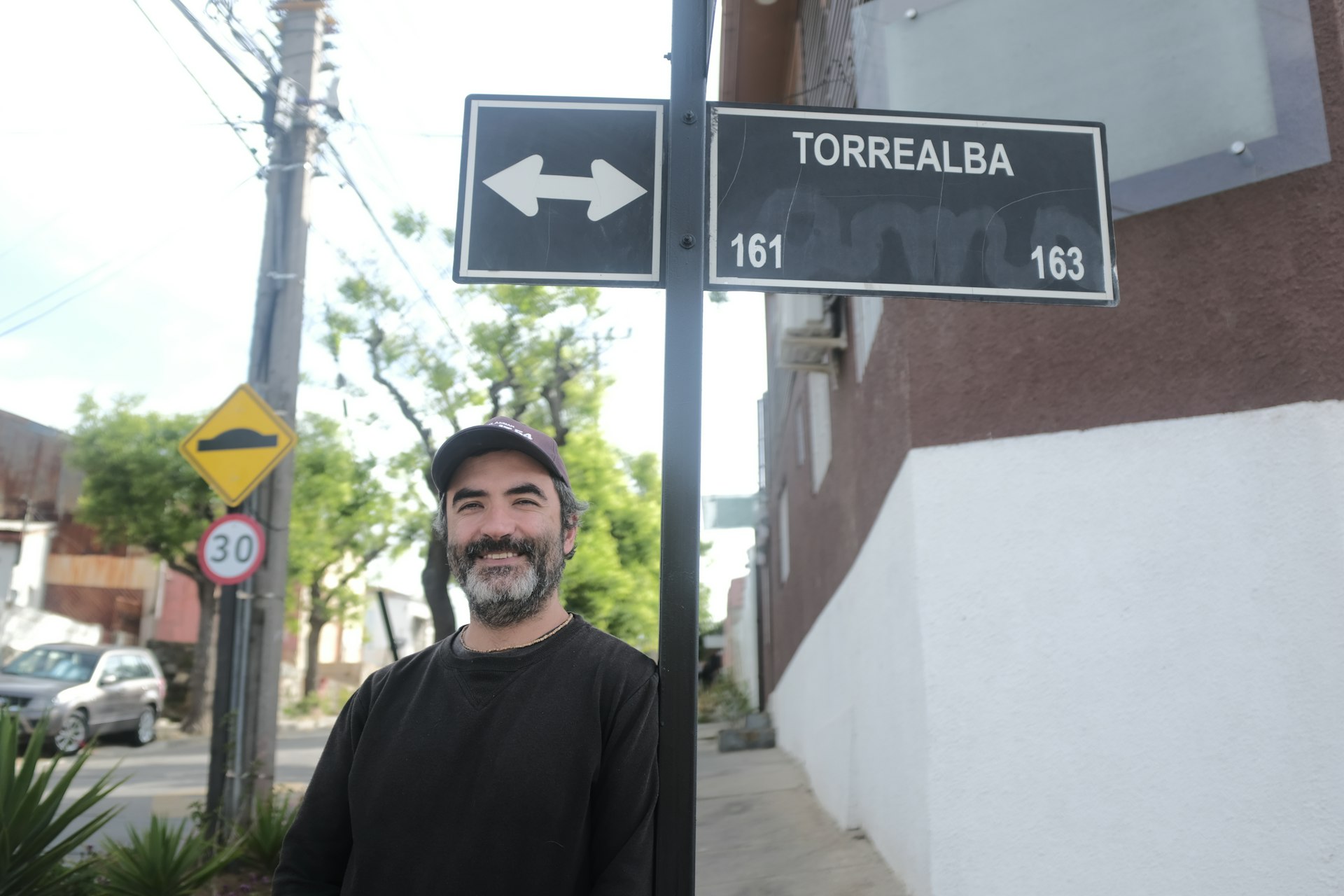Turning seeds into forests with compound returns
Compound returns are one of the best reasons to invest. This is true for anyone, but it’s especially true if you’re investing for a long time horizon. They’re also a great example of how investing helps make your money work for you.

Let’s take a look at why this is the case, and how you can get the most value out of compound returns:
Starting simple
Let’s start with the basics: simple returns. These are exactly what they sound like; the percentage return you make on your investment. If you put $100 in a bank account that pays a 3% interest rate, you’ll get $3 at the end of the year. That $3 is your simple return. Easy.
Going compound
Now that you have $3, you have a decision to make. You can leave your $3 in the bank, or you can take it out and buy an ice cream or something. If you take your $3 out, then wait another year, you’ll have another $3 in interest. That interest comes from your original $100 deposit, earning $3 again. Sounds great!
But what if you left the interest in the bank account instead? This would change things. You would start the second year with $103 in the bank. At the end of the year, you would have $106.09.
$100 of that is the money you deposited in the first place
Then $3 is the interest you made in the first year (3% of $100)
Then, you get another $3 from your interest in the second year (3% of $100)
Then, you get another 9 cents in interest on the $3 you made in the first year (3% of $3)
That extra 9 cents is your compound interest! In other words, that’s interest on your interest.
That doesn’t seem like very much…
Now you’re probably wondering why we’re getting excited about 9 cents. And fair enough. But over time, that 9 cents really starts to grow. Because that was just the first two years. In the third year, you earn interest on your deposit, plus interest on the interest you earned in your first year, plus interest on the interest you earned in your second year.
In the fourth year, you earn interest on your deposit again, plus interest on the interest you earned in your first year, plus interest on the interest you earned in your second year, plus interest on the interest you earned in your third year.
And so on, and so forth in every following year.
It’s kind of like planting a garden. If you planted something from a seed, after awhile you’d have a little plant, which would drop more seeds. If one of those seeds started growing, you’d then have two plants—each of which would drop more seeds. Then you’d have four plants, and four more seeds.
Compound interest is a lot slower than this, but the principle is the same. In fact, if you left your $100 in the bank for 30 years, you’d have $242 in total—including $142 in interest! That’s $90 in interest on your original $100, plus another $52 in compound interest! That’s more than half of your interest again, just for leaving your money in the bank for awhile.
Beyond the banks
That’s compound interest covered. But there’s also compound returns, which are similar, but not identical. The concept is the same—by leaving your money invested, you start to earn returns not just on your initial investment, but on the returns you made along the way.
One really good way to get compound returns is by reinvesting dividends. Let’s say you buy 100 shares for $1 each, and they pay dividends of 10 cents per share, per year. At the end of the year, you get $10 from your 100 shares.
If you spend that $10 on another 10 shares, you’ll now have 110 shares. When next year’s dividend day comes around, you’ll get $11, because you have 10 more shares than you had last year. Reinvest that, and now you have 121 shares. Next dividend day, you have $12.10.
You can think of this process like a snowball turning into an avalanche. In the beginning, the differences are pretty small. But over time, as each year’s returns earn returns of their own, your total returns really start to grow in a way that wouldn’t have been possible otherwise.
Investing for growth
But what if you invest in shares that don’t pay dividends? In these scenarios, your compound returns are a little less obvious—but they still exist.
Let’s say you invested your $100 in a new company that is experiencing huge growth. After a year, it’s gained value by a whopping 50%! Now your $100 is worth $150.
You now have the same choice you had with the dividends and the bank account: you can cash in your returns, by selling $50 worth of shares, or you can leave them.
Let’s say you cash them in. Now you have $50 in cash, and $100 in shares. Then, the share price goes up by another 50%! You’ve earned another $50—congratulations.
But if you’d kept your shares, that 50% increase would have earned you $75 (50% of $150). That’s a big difference!
Compound returns and dollar-cost averaging
We’ve spoken a lot in the past about dollar-cost averaging, which is when you invest a set amount on a regular basis. Dollar-cost averaging can make your compound returns even more powerful, because you’re giving your money more and more opportunities to earn returns. If the amount you invest is growing, then your returns grow too—and if your returns grow, your compound returns grow.
Get amongst it!
So now we know what compound returns are—they’re the little snowball that grows into an avalanche, or a little acorn that grows into a forest of trees. It might not look like much today, but if you can keep your hands off your returns, and let them grow, then let their returns grow, you’ll have a really solid nest egg in the future. All you need to do is wait!
But don’t take our word for it. The best way to see the magic of compound returns is to investigate it for yourself. Take a look at Sorted’s calculator, and run a few different scenarios. You’ll be amazed at how much of your long-term returns are actually compound returns, and what a difference you can make by investing regularly with a long time horizon.
Ok, now for the legal bit
Investing involves risk. You aren’t guaranteed to make money, and you might lose the money you start with. We don’t provide personalised advice or recommendations. Any information we provide is general only and current at the time written. You should consider seeking independent legal, financial, taxation or other advice when considering whether an investment is appropriate for your objectives, financial situation or needs.
Join over 600,000 investors



